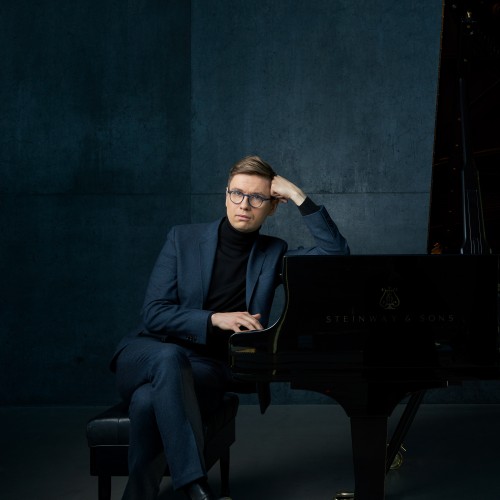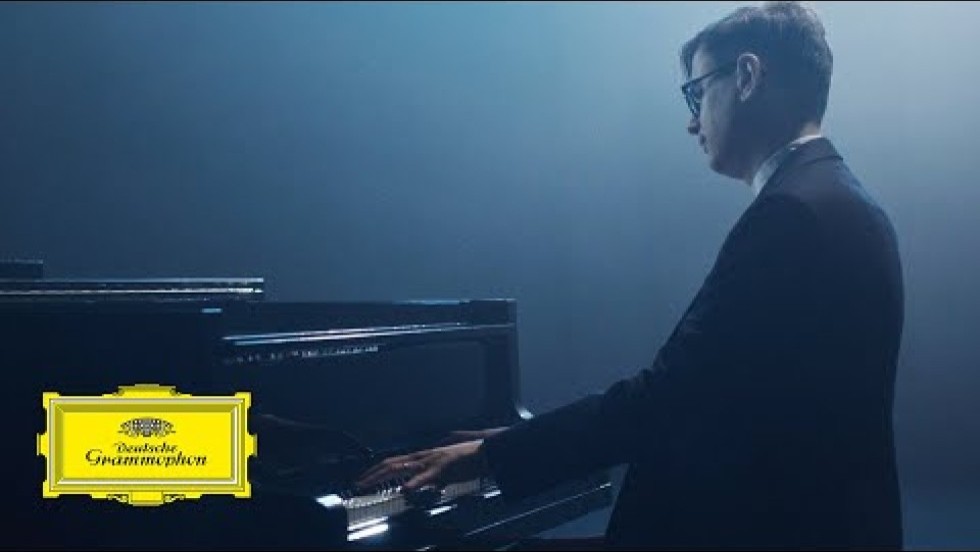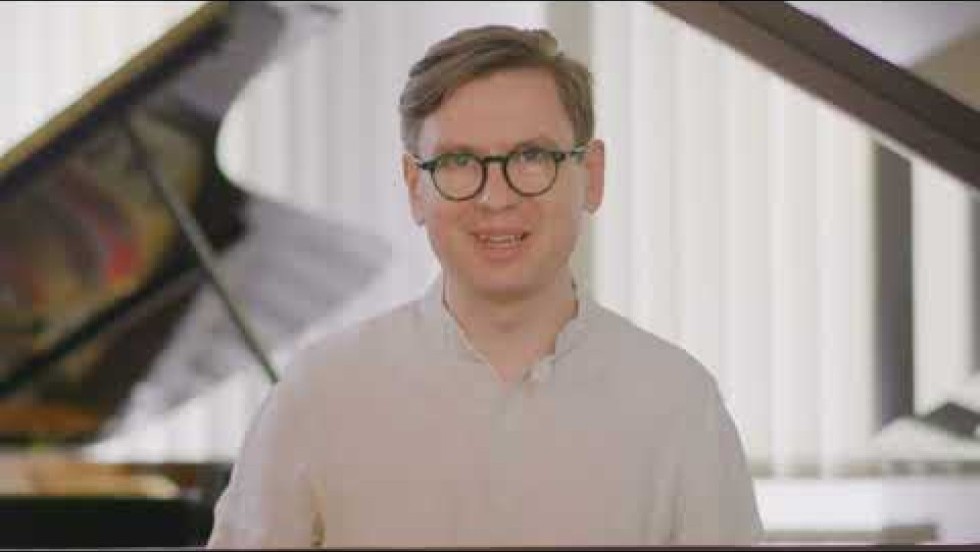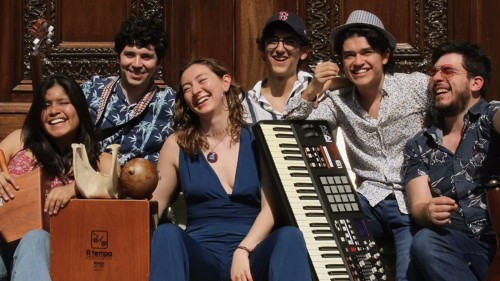
Víkingur Ólafsson, piano
Goldberg Variations
Cookie Notice
This site uses cookies to measure our traffic and improve your experience. By clicking "OK" you consent to our use of cookies.
Please note: there will be no late seating for this performance.
This performance is currently sold out. It is possible tickets may come available, so please just keep checking. For questions, please contact the box office at boxoffice@celebrityseries.org
After a rapturously received sold-out Celebrity Series debut in 2022, pianist Víkingur Ólafsson returns to Boston to perform Bach’s Goldberg Variations at Jordan Hall.
With this performance, Ólafsson returns to one of the composers that has defined his career to date, and puts his own stamp on an iconic work for the Baroque keyboard: Bach’s Goldberg Variations.
Drawing out the underlying structures and illuminating extraordinary moments, Ólafsson reflects and refracts well-known works to make us hear them in new ways. With its rigorous form and opportunities for flights of virtuosic expression, what will this suite become in the hands of one of Bach’s most innovative and thoughtful interpreters? Let’s find out together.
Program Details
For Music-Lovers, to Refresh Their Spirits
Thoughts on playing the Goldberg Variations
by Víkingur Ólafsson
In the Goldberg Variations, the one thing that rivals Bach’s complete intellectual mastery of his craft is his inspired, creative playfulness. In thirty variations, built on the humble harmonic framework of a simple, graceful aria, Bach turns limited material into boundless variety like no one before or since. The Goldberg Variations contain some of the most virtuosic keyboard music ever written, some of the most astonishingly brilliant uses of counterpoint in the repertoire and countless instances of exalted poetry, abstract contemplation and deep pathos—all within immaculately shaped structures of formal perfection. In a paradox that only seems to make sense in the light of Bach’s particular, baroque genius, the relentlessly strict formal premise he sets himself turns out to afford him sublime creative freedom—and he clearly revels in it. When we write and talk about the Goldberg Variations, we tend to focus on Bach the profound thinker, assiduous craftsman and visionary musical architect. But when we play and listen to the Goldberg Variations, we cannot but notice that we are also in the company of Bach the cheerful, at times ecstatic, master improviser; Bach the greatest keyboard virtuoso of his time.
The Goldberg Variations were the fourth and final installment of the Clavier-Übung, which Bach published from 1731 to 1741, containing the six Partitas, Italian Concerto, and French Overture for harpsichord, as well as the formidable collection of organ works often referred to as the “German Organ Mass.” As such, the Goldberg Variations and their archetypal form could be seen as the logical culmination of ten years’ worth of exploration of the possibilities of the keyboard. There is a more spontaneous quality to the famous but factually contested origin story of the work as recounted by Forkel in his 1802 biography of Bach, namely that it was composed on a commission from the Russian diplomat-nobleman Count Keyserlingk, who wanted music of a “somewhat lively character” to while away his sleepless nights. This story contains a truth of the mythological kind, if not the historical. For what music could possibly be better suited to warding off the solitary despair of insomnia (or, by extension, that of human existence itself) than the Goldberg Variations, with their constant interplay of reassuring regularity and exhilarating novelty? Another delightful quirk in this story (and indeed one of the reasons we have to doubt its veracity) is that it is not the name of Count Keyserlingk that has stuck to the piece, but that of his resident harpsichordist, Johann Gottlieb Goldberg, whose equally sleepless nights were spent playing the variations for his master from an adjoining room. It is hard not to feel a certain kinship with young Goldberg, a pupil of Bach himself, and indeed to feel thankful for what feels like a prescient little nod to all the musicians that have since made the piece their own (whether or not they, too, have lost sleep over it). Because making the work our own is the enduring and unique challenge of the Goldberg Variations. As a work “not of an age, but for all time,” to borrow Ben Jonson’s words on Shakespeare, we performers must somehow feel like we have taken part in its creation, that we have reinvented it in some way for our contemporaries.
I have dreamt of recording this work for twenty-five years. As with some of Bach’s other works on this scale, I was inclined to think of it as a grand, commanding cathedral of music, magnificent in its structure and intricate in its ornamentation. Now I find another metaphor more apt, as far as metaphors go: that of a grand oak tree, no less magnificent, but somehow organic, living and vibrant, its forms both responsive and regenerative, its leaves constantly unfurling to produce musical oxygen for its admirers through some metaphysical, time-bending photosynthesis. Or, in the rather more down-to-earth terms that Bach himself used to describe his variations on the title page of the original 1741 edition, they truly are a work “composed for music-lovers, to refresh their spirits.”
Playing the Goldberg Variations for a live audience is always a great joy, but making a recording of the work presents a different kind of pressure. For a while, I thought I had to meet its formal perfection through mathematical means, measuring out tempo markings on the metronome for every variation in search of the ideal proportions and predetermining as many elements of the interpretation as possible, from the infinite dynamic shifts and inflections within the polyphony to the articulation of more or less every phrase. In practice, however, this all fell completely flat. Because, for all their formal consistency, the Goldberg Variations are not a predictable work of music. None of the endless questions of interpretation posed in Bach’s famously instruction-free notation can be resolved on some kind of autopilot, no matter how well founded in research. Instead, the work beckons a kind of interpretative improvisation. Like the laws of physics that govern the universe, the work’s logical substructures act mostly in the background. Its system of successive groups of three variations, where a character piece is followed by a virtuosic, toccata-like movement and finally by a canon on ever-increasing intervals, is impressive and effective in its own right. But, at least to me, the Goldberg Variations’ genius lies not in the general, but the specific. As each variation unfolds, one must be wholly gripped by its individual drama and affect, drawn into its own marvelous little microcosm and filled with the joy of discovering it.
The element of delightful surprise that runs through the entire work reaches a certain culmination in the final variation, which turns out not to be the canon on the tenth that would have been expected from the preceding pattern. Instead, Bach presents us with his Quodlibet, or medley, thus inviting us to join the sort of musical merrymaking fabled to have been a favorite at Bach family gatherings. This is where popular melodies of the day—sacred or profane—were borrowed and superimposed on each other in flawless counterpoint through collective improvisation. The lyrics of the two folk melodies borrowed in this Quodlibet have been suggested to be jocular clues as to what comes next. The first one has commonly been identified as a folk song whose obscure but quite suggestive lyrics start with the words “Ich bin so lang nicht bei dir g’west” (“It’s been so long since I was with you”)—though a similarity has also been noted with a melody of an entirely different ilk, the opening line of the well-known chorale Was Gott tut, das ist wohlgetan (“Whatever God does is done well”). The second melody is certainly a German variant of the Italian Bergamasca tune, sung to the text “Kraut und Rüben haben mir vertrieben” (“Cabbage and turnips have driven me away”). “Kraut und Rüben” is an old slang term for mishmash or hodgepodge—potentially an irreverent reference to the variations that have kept us away from the original Aria for so long. The warm, humorous conviviality of it all is most welcome after all the preceding contrapuntal abstractions and deliberations—not to mention the finger-breaking virtuosity that has built up towards the cataclysmic penultimate variation. But this Quodlibet is no mere musical joke. It is an instance of Bach’s unique totality of musical and spiritual expression, profoundly human but also divine. This is music that brings exaltation, salvation and triumphant jubilation at the end of a long, musical journey. This is the Goldberg Variations’ “Ode to Joy” – this is where “alle Menschen werden Brüder” (“all men shall be brothers”).
As the resonant voices of the Quodlibet fade away into silence, the return of the Aria is a final surprise, inevitable only in retrospect. Like meeting an old and dear friend after a long separation, it somehow feels like it never left at all. And of course, at least harmonically, it never did. Not a note has been altered, but it has changed—or, more accurately, we have. I often wonder how very different this work would have been had Bach not given us this unusual chance to marvel at the Aria in its pure, original form once more, to savor this tender farewell that also feels like a new beginning. Or what is it really we are experiencing—a reunion or a reminiscence? Without this cyclic re-encounter, we would not find this work such an intuitive metaphor for the human condition, for how we experience life and the passage of time. We would not be left wondering, like the ancient philosopher Heraclitus, whether you can ever really step into the same river twice—the same stream, the same Bach.
Reprinted with permission of the author, originally published as liner notes in Olafsson’s recording of the work on the Deutsche Grammophon label.
For Music-Lovers, to Refresh Their Spirits
Thoughts on playing the Goldberg Variations
by Víkingur Ólafsson
In the Goldberg Variations, the one thing that rivals Bach’s complete intellectual mastery of his craft is his inspired, creative playfulness. In thirty variations, built on the humble harmonic framework of a simple, graceful aria, Bach turns limited material into boundless variety like no one before or since. The Goldberg Variations contain some of the most virtuosic keyboard music ever written, some of the most astonishingly brilliant uses of counterpoint in the repertoire and countless instances of exalted poetry, abstract contemplation and deep pathos—all within immaculately shaped structures of formal perfection. In a paradox that only seems to make sense in the light of Bach’s particular, baroque genius, the relentlessly strict formal premise he sets himself turns out to afford him sublime creative freedom—and he clearly revels in it. When we write and talk about the Goldberg Variations, we tend to focus on Bach the profound thinker, assiduous craftsman and visionary musical architect. But when we play and listen to the Goldberg Variations, we cannot but notice that we are also in the company of Bach the cheerful, at times ecstatic, master improviser; Bach the greatest keyboard virtuoso of his time.
The Goldberg Variations were the fourth and final installment of the Clavier-Übung, which Bach published from 1731 to 1741, containing the six Partitas, Italian Concerto, and French Overture for harpsichord, as well as the formidable collection of organ works often referred to as the “German Organ Mass.” As such, the Goldberg Variations and their archetypal form could be seen as the logical culmination of ten years’ worth of exploration of the possibilities of the keyboard. There is a more spontaneous quality to the famous but factually contested origin story of the work as recounted by Forkel in his 1802 biography of Bach, namely that it was composed on a commission from the Russian diplomat-nobleman Count Keyserlingk, who wanted music of a “somewhat lively character” to while away his sleepless nights. This story contains a truth of the mythological kind, if not the historical. For what music could possibly be better suited to warding off the solitary despair of insomnia (or, by extension, that of human existence itself) than the Goldberg Variations, with their constant interplay of reassuring regularity and exhilarating novelty? Another delightful quirk in this story (and indeed one of the reasons we have to doubt its veracity) is that it is not the name of Count Keyserlingk that has stuck to the piece, but that of his resident harpsichordist, Johann Gottlieb Goldberg, whose equally sleepless nights were spent playing the variations for his master from an adjoining room. It is hard not to feel a certain kinship with young Goldberg, a pupil of Bach himself, and indeed to feel thankful for what feels like a prescient little nod to all the musicians that have since made the piece their own (whether or not they, too, have lost sleep over it). Because making the work our own is the enduring and unique challenge of the Goldberg Variations. As a work “not of an age, but for all time,” to borrow Ben Jonson’s words on Shakespeare, we performers must somehow feel like we have taken part in its creation, that we have reinvented it in some way for our contemporaries.
I have dreamt of recording this work for twenty-five years. As with some of Bach’s other works on this scale, I was inclined to think of it as a grand, commanding cathedral of music, magnificent in its structure and intricate in its ornamentation. Now I find another metaphor more apt, as far as metaphors go: that of a grand oak tree, no less magnificent, but somehow organic, living and vibrant, its forms both responsive and regenerative, its leaves constantly unfurling to produce musical oxygen for its admirers through some metaphysical, time-bending photosynthesis. Or, in the rather more down-to-earth terms that Bach himself used to describe his variations on the title page of the original 1741 edition, they truly are a work “composed for music-lovers, to refresh their spirits.”
Playing the Goldberg Variations for a live audience is always a great joy, but making a recording of the work presents a different kind of pressure. For a while, I thought I had to meet its formal perfection through mathematical means, measuring out tempo markings on the metronome for every variation in search of the ideal proportions and predetermining as many elements of the interpretation as possible, from the infinite dynamic shifts and inflections within the polyphony to the articulation of more or less every phrase. In practice, however, this all fell completely flat. Because, for all their formal consistency, the Goldberg Variations are not a predictable work of music. None of the endless questions of interpretation posed in Bach’s famously instruction-free notation can be resolved on some kind of autopilot, no matter how well founded in research. Instead, the work beckons a kind of interpretative improvisation. Like the laws of physics that govern the universe, the work’s logical substructures act mostly in the background. Its system of successive groups of three variations, where a character piece is followed by a virtuosic, toccata-like movement and finally by a canon on ever-increasing intervals, is impressive and effective in its own right. But, at least to me, the Goldberg Variations’ genius lies not in the general, but the specific. As each variation unfolds, one must be wholly gripped by its individual drama and affect, drawn into its own marvelous little microcosm and filled with the joy of discovering it.
The element of delightful surprise that runs through the entire work reaches a certain culmination in the final variation, which turns out not to be the canon on the tenth that would have been expected from the preceding pattern. Instead, Bach presents us with his Quodlibet, or medley, thus inviting us to join the sort of musical merrymaking fabled to have been a favorite at Bach family gatherings. This is where popular melodies of the day—sacred or profane—were borrowed and superimposed on each other in flawless counterpoint through collective improvisation. The lyrics of the two folk melodies borrowed in this Quodlibet have been suggested to be jocular clues as to what comes next. The first one has commonly been identified as a folk song whose obscure but quite suggestive lyrics start with the words “Ich bin so lang nicht bei dir g’west” (“It’s been so long since I was with you”)—though a similarity has also been noted with a melody of an entirely different ilk, the opening line of the well-known chorale Was Gott tut, das ist wohlgetan (“Whatever God does is done well”). The second melody is certainly a German variant of the Italian Bergamasca tune, sung to the text “Kraut und Rüben haben mir vertrieben” (“Cabbage and turnips have driven me away”). “Kraut und Rüben” is an old slang term for mishmash or hodgepodge—potentially an irreverent reference to the variations that have kept us away from the original Aria for so long. The warm, humorous conviviality of it all is most welcome after all the preceding contrapuntal abstractions and deliberations—not to mention the finger-breaking virtuosity that has built up towards the cataclysmic penultimate variation. But this Quodlibet is no mere musical joke. It is an instance of Bach’s unique totality of musical and spiritual expression, profoundly human but also divine. This is music that brings exaltation, salvation and triumphant jubilation at the end of a long, musical journey. This is the Goldberg Variations’ “Ode to Joy” – this is where “alle Menschen werden Brüder” (“all men shall be brothers”).
As the resonant voices of the Quodlibet fade away into silence, the return of the Aria is a final surprise, inevitable only in retrospect. Like meeting an old and dear friend after a long separation, it somehow feels like it never left at all. And of course, at least harmonically, it never did. Not a note has been altered, but it has changed—or, more accurately, we have. I often wonder how very different this work would have been had Bach not given us this unusual chance to marvel at the Aria in its pure, original form once more, to savor this tender farewell that also feels like a new beginning. Or what is it really we are experiencing—a reunion or a reminiscence? Without this cyclic re-encounter, we would not find this work such an intuitive metaphor for the human condition, for how we experience life and the passage of time. We would not be left wondering, like the ancient philosopher Heraclitus, whether you can ever really step into the same river twice—the same stream, the same Bach.
Reprinted with permission of the author, originally published as liner notes in Olafsson’s recording of the work on the Deutsche Grammophon label.
“...his performance of the Goldbergs exceeded my wildest expectations. ”
Bachtrack
“ Bach at the keyboard has rarely sounded so fresh, expressive and joyous. ”
Sunday Times (UK) Classical Album of the Week pick
“[Ólafsson’s] inspired playing makes Bach more human than we’ve heard in a long time”
Suddeutsche Zeitung
Featured Artist
Video
NEC's Jordan Hall Venue Information
Related Events

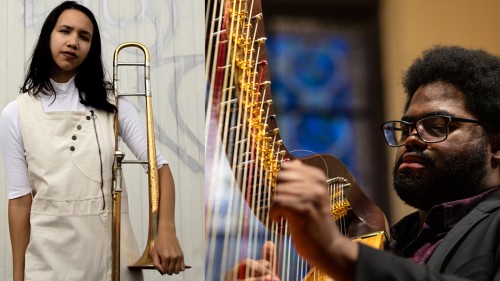
Kalia Vandever, trombone & Charles Overton, harp
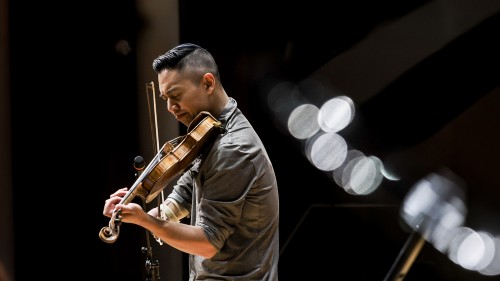
Adrian Anantawan & Friends
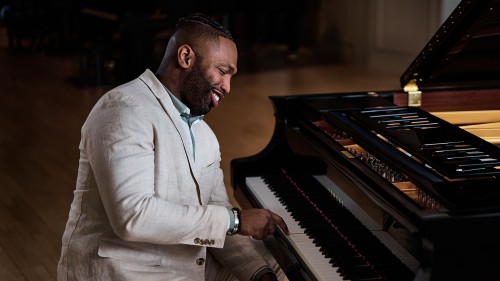
John Paul McGee Jazz Trio

J’Nai Bridges, mezzo-soprano
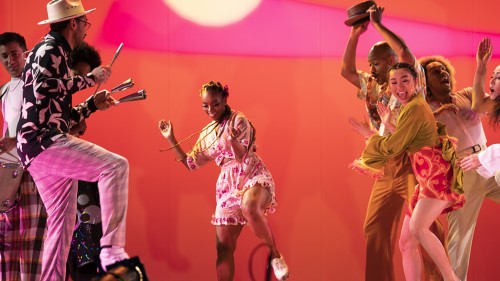
Music From The Sole
House is Open, Going Dark
Stay in touch with Celebrity Series of Boston and get the latest.
Email Updates Sign up for Email Updates